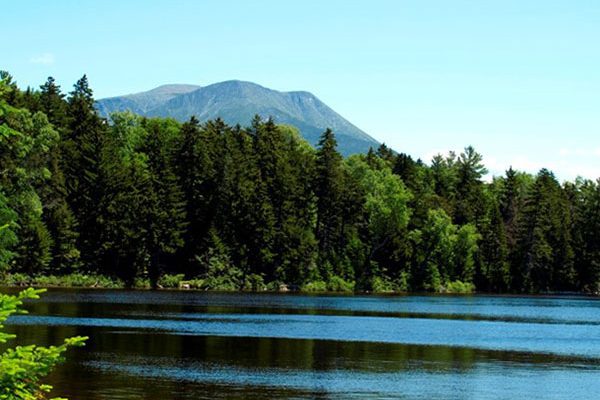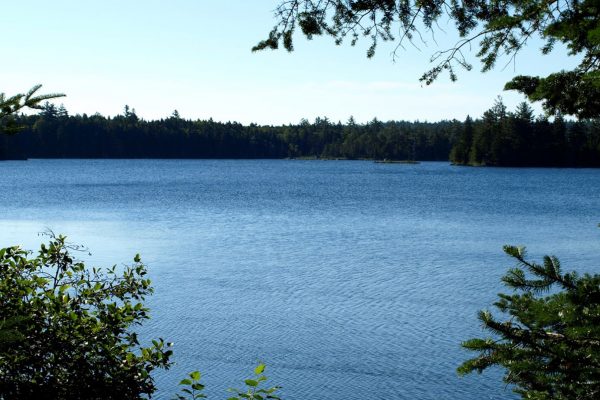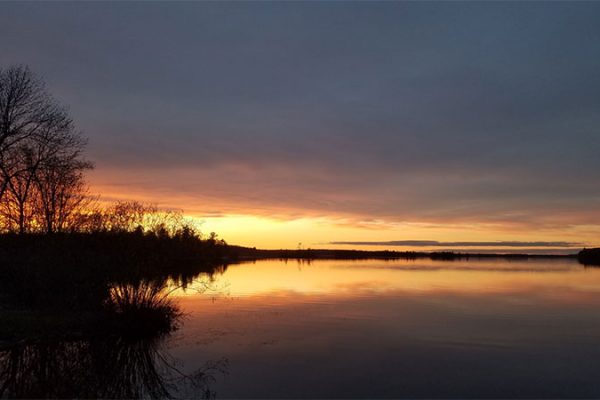
Mount Katahdin from Kidney Pond, by Ivonne Vazquez
An important component of knowledge as a Registered Maine Guide is the ability to read a topographic map and having a real-time, firm understanding of topography. This is big-picture thinking. Not only is this extremely important and helpful when you’re leading a group on a hike, it is a deciding factor in maintaining a high level of safety for yourself and those in your care.
This skill and knowledge are just as crucial for anyone working the land. As gardeners and farmers, we should understand the immediate topography of the land we steward. There should be an awareness of the flow of water, prevailing winds, position of the sun, and the health and/or fragility of the soils so that our plants survive and thrive. But, we should also be acutely aware of the bigger picture.
A contemplative person by nature, I spend a considerable amount of time quietly standing still in the woods, on the farm, and in my garden. During each season and at different times of the day I stand still, listening, watching, thinking. Not because there isn’t work to do, to the contrary. It is precisely because of the amount of work to be done that I take this time to think about my processes, efficiency, and conservation of time, energy, and resources.
The Most Precious Resource of All
One such resource, the most valuable and precious of all and the one thing no animal, plant, or person can live without…water. It is foremost on my mind to make the best effort to conserve our water. During the spring melt I watch which areas melt first and quickest and to where it flows. During a heavy rain, I stand outside and try to determine the best places for rain barrels and general catchment. I take notice in areas where future erosion may be a problem and take action to minimize such impact. Knowing the topography of my space and the flow of water allows me to make smart decisions about the use of the land I steward and for the planting of vegetable, herbs, flowers, and trees based on the water needs of the specific plant.

Long Lake in Princeton, Maine, by Ivonne Vazquez
Where Does It All Go?
During the spring melt or after a heavy rain during the upcoming gardening season, take a moment to observe where the water goes. Notice how it flows when you water your garden or fields. Consider areas where water pools and puddles. Is this a potential for concern? Learn to determine the percolation rate of your soil to understand what the rate of water draining through tells you about the type of soil and crops/vegetation are most suited to grow in the area. This is also helpful in mitigating future issues for planting, building, siting utilities, etc.
Perhaps there are certain areas where the top layer of soil is eroding. Why is it eroding, and what can be done to prevent it? If you fertilize your garden with well-composted animal manure or other amendments, does this stay at the bottom of your garden or fields or does it flow elsewhere?
In My Case, It Is All Downhill from Here
Changes in topography begin at my front door.
The house sits at the highest point on the lot. The western side of the garden is on the left and lower to the house. However, this side is at a higher elevation than the eastern half. Rainwater from this higher side drains into the frog pond and moist woods behind. Water from the house flows north via the easterly side of the garden and down the driveway, ultimately reaching a 50-foot vegetative buffer leading into a small stream. This small stream flows north for 100 feet. Approximately 300 feet from the garden, there is a confluence of two stream flows, one as described above, and the other is a small flow from the outlet of Pushaw Lake (a mile away). These two branches of the stream converge and continue to Great Brook a mile or so southwest. From there, Great Brook flows into Kenduskeag Stream, which eventually discharges into the Penobscot River. The Mighty Penobscot River, one of two rivers that carries almost half of the fresh water of the state of Maine, discharges into Penobscot Bay, which flows into the ocean.
Most of this happens within a six-mile radius of the farm.

Sunset at Pushaw Lake, by Ivonne Vazquez
Why is This Significant?
Because whatever I do, whatever I plant, add, remove within my garden, or farm influences a great deal more than one might imagine.
So, the next time you have hose in hand, watch the direction of the flow of water. Look at a map to determine which bodies of water are fed from your home or farm runoff. Take a moment to stand still in your garden or field and contemplate how you have the opportunity to effect positive change in your environment simply by understanding and reducing pollutants and runoff from your vegetative areas.
…because, quite honestly, we are ALL downhill from somewhere.
—by Ivonne Vazquez
Ivonne Vazquez is passionate about native plants, herbs, pollinators, and the environment. She is a Master Gardener; Licensed Registered Maine Guide/Recreation; basic gardening instructor at Bangor Adult Education, and farmer. Ivonne holds a certificate in Sustainable Landscaping & Garden Management.











Leave a Reply